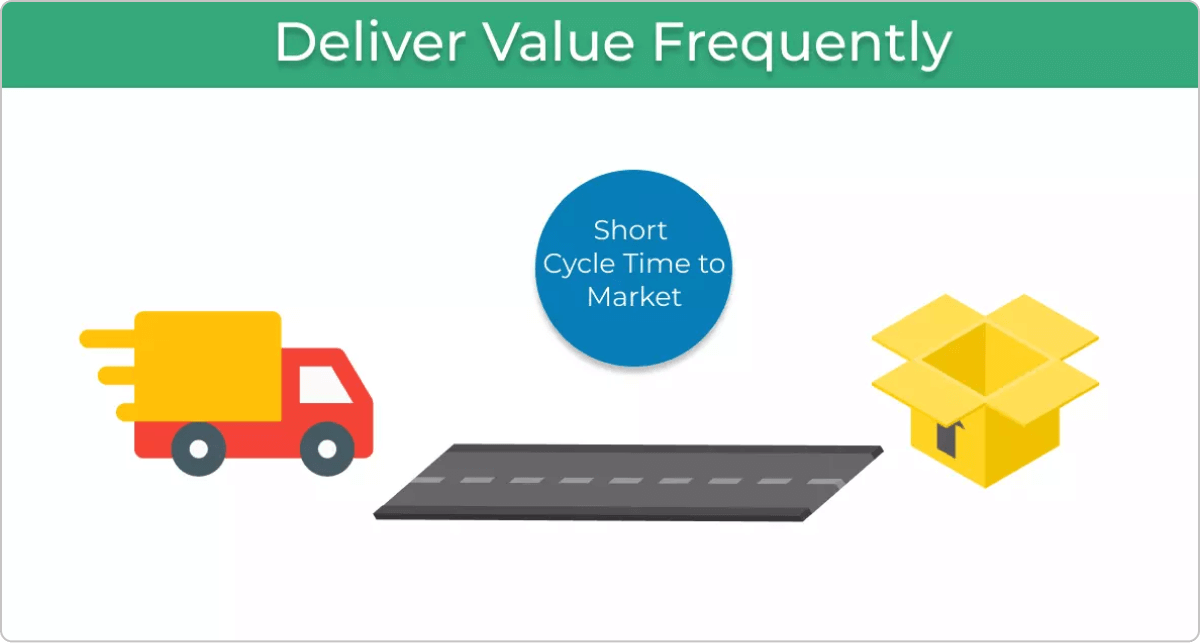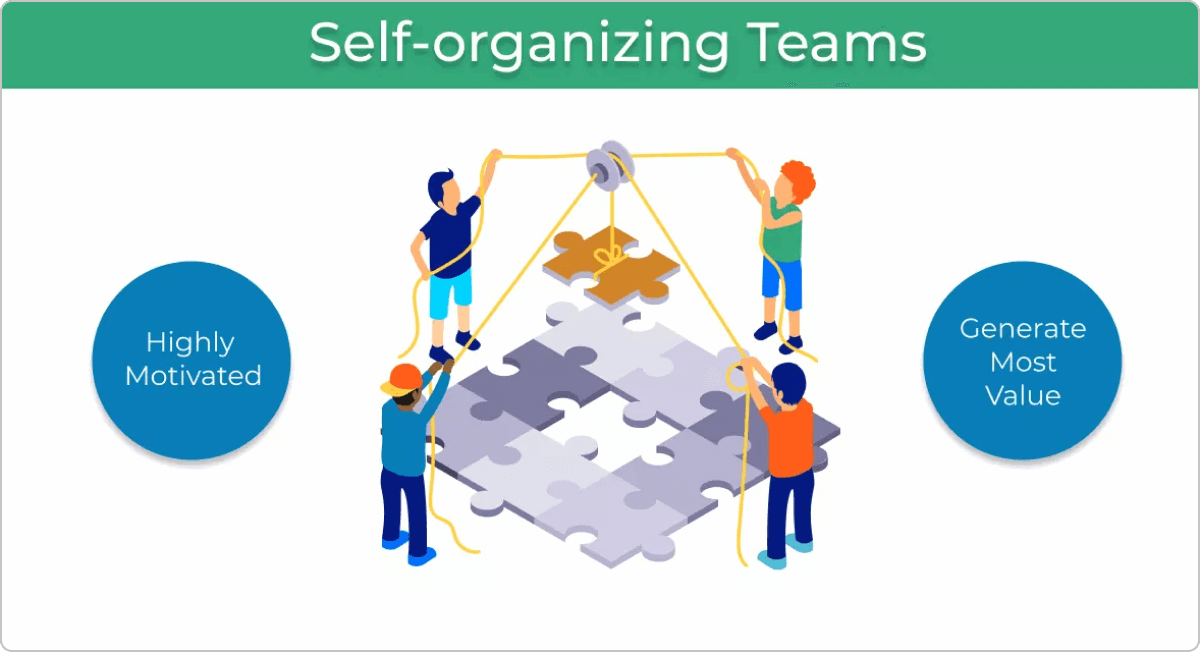Agility is no longer an advantage; it's a necessity.
Driven by the constant change of all things business, organizations increasingly recognize the need for agility to stay competitive and relevant. Stepping beyond software development, business agility has proven to be widely successful across various sectors.
Included in this article are several examples of successful business agility transformations and why this adaptive mindset matters in the modern business world.
5 Real-Life Business Agility Examples
To gain a deeper understanding of business agility, it's beneficial to explore real-world examples. Stories of companies like Toyota, Spotify, and Walmart, which have successfully incorporated agility into their operations, offer valuable insights into the effective application of these principles.
1. Cultivating Business Agility in a Hundred-Year-Old Company’s Tradition at Amerisure
Amerisure is a commercial insurance provider with rich traditions rooted in their history. It is a bright example that illustrates the crucial role of the leadership team in shifting a hundred-year-old tradition to an organizational agility mindset.
It all started with the executive leadership team realizing the competing external factors that may affect their company negatively if nothing was done. They recognized the need for a change and took a step toward a business agility transformation. At its core, it was about finding new opportunities to cope with the uncertainties of the business environment and maintaining versatility.
Amerisre’s transformation goals included improving their speed of innovation, enhancing the delivery processes, and finding new engaging ways to improve customer satisfaction.
The first step was forming an Agile Practice Group – a change team of leaders from all business units. This group oversaw the change in the culture of the organization. It was their responsibility to introduce and cultivate this culture-shaping journey to all teams.
With the help of a professional consultant, they implemented the so-called Competing Values Framework. Its purpose was to visualize where the company aimed to be and to maintain focus on the outcomes it wanted to accomplish.
Amerisure’s key business agility challenges included:
- Maintaining an innovative culture prone to experimenting
- Constantly looking to get predictable results
- Concurring priorities
The three focus areas of the transformation are:
-
Business Agility: identifying and targeting the pain points and embracing different strategies to resolve them. This included tactics supporting experimentation, celebrating small wins, and learning from failures.
-
Leadership Agility: engaging senior leaders in workshops to discuss the required behavior and agility concepts to achieve the desired results.
-
Everyday Agility: rolling out a training program to all employees and engaging them personally in what they can do to absorb the Agile mindset.
Since its launch, the transformation initiative positively impacted crucial performance indicators, including reducing time-to-market by 30% and improving the company's Net Promoter Scores, the company has opened two new businesses, won numerous industry awards, and gained recognition for its innovation program and outcomes. Furthermore, teams increased their productivity, and their engagement in the initiative kept growing.
Source: Agile Leadership Journey
2. The Evolving Journey toward an Agile Organization at ING
ING, the Dutch banking group, undertook a substantial Agile transformation to enhance its customer experience and operational efficiency. Given the market dynamics, their main challenge was to adapt to the rapidly changing customer behavior and respond to their expectations. They quickly recognized that coping with the emerging digital trends would require more than the traditional management model. This was when the leadership team made the bold decision to shift their operations and, most importantly, culture toward Agile.
Starting its transformation journey back in 2015, ING has made some massive changes to its organizational structure and operations. Their primary goal was to provide their customers with an exceptional experience and service through a multichannel journey.
Despite starting their transformation with a few departments (marketing, product and channel management, IT development), the rest of the functions were not isolated. They were introduced to Agile practices and gradually adopted them. These practices included forming self-organizing teams, promoting ownership and decision-making, having daily stand-up meetings, etc.
The four significant elements of their transformation included:
-
Working in an Agile way: people from cross-functional teams are more likely to collaborate and share ideas for improvement and experimentation without facing management control and slowing down the process.
-
Breaking down organizational silos: empower shared leadership and self-organizing teams.
-
Frequent delivery: instead of a few big software releases per year, switch to regular launches every 2 weeks.
-
Agile performance-management model: encouraging self-knowledge, knowledge-sharing, and expertise as the basis to evaluate individual performance.

Through the restructuring into multidisciplinary squads and tribes, implementing different programs inspired by other successful Agile transformations, and adopting new open ways of communicating, ING has gone a long way in its business agility transformation. As a result, the management has seen improved delivery time to market, boosted employee engagement, increased productivity, and continued to enrich their client experience.
Source: McKinsey & Company
3. Reshaping Culture through End-to-End Flow Visualization and Automation at Somabe
Somabe is an industrial engineering company that designs and manufactures special machines.
Some of the weaknesses of the complex production processes in Somabe were limited transparency across different departments, losing track of work progress, and not knowing who works on what. All of these prompted the need for change leading to the launch of an initiative to improve their business agility.
At first, they adopted Scrum, but soon after, they realized they needed better ways to manage their development and production processes and reduce the large batches of work.
When the management team recognized the emerging need to change their current work process, they started implementing various Agile practices resulting in the following:
- Developing a work breakdown structure to segment larger work into more granular and manageable pieces of work.
- Creating automated workflows for seamless work management and improved collaboration among teams.
- Implementing portfolio boards to gain a company-wide project visualization.
- Fostering a culture of innovation and shared learning.
- Empowering self-organizing teams and shared leadership.

Throughout their journey, Somabe used professional coaching services and implemented digital project management tools to accelerate and enhance their Agile transformation. Businessmap, the platform of their choice, has been helping them develop an interconnected network of management and team boards, use advanced automation to streamline their activities, and integrate the tool with other systems.
Source: Businessmap Case Study
4. Improved Customer Experience through Agility and Digitalization at Algar
The Brazilian telecommunication company Algar Telecom set out on a mission to integrate two of its critical units and improve their cooperation by focusing on embracing the Agile mindset and ways of working.
The project started in one of their main functions – the integration department. The decision was made since the business unit was already applying some Agile principles and practices. At the same time, this area still applied a more traditional management approach.
The company realized the need to modernize the current management practices of the Integration department so it could fit better with the working environment of its Business unit. That was the primary goal of its digital transformation initiative.
The transition began with identifying their main pain points:
- Unstable project management systems
- Misalignment between the business and integration area
Lack of a central place to keep the entire information flow
- Unclear delivery metrics
- Low transparency and visibility of projects
In response to these challenges, the Algar team recognized the need for a solution to provide an overview of the work moving across teams that could fit their specific needs at the same time. They needed to drive the focus on continuous delivery.
With the help of Businessmap, the digital platform they adopted, the Integration department made significant changes to their process. They could build interconnected work management boards for each tribe, map the end-to-end delivery process, spot bottlenecks, and blockers, have dashboards with work performance data, and share boards with clients for better collaboration.
 Visualization of project on a digital board
Visualization of project on a digital board
Some of the key results of Algar’s digital journey achieved so far include:
- The management team is now more self-confident in making decisions based on the data generated and tracked in their customized dashboards.
- The agility levels across different levels are increasing.
- Embracing a continuous improvement mindset.
Source: Businessmap Case Study
5. The Impact of Cross-Functional Operations in Fashion Retail: The Case of Zara
Zara, a multinational clothing retailer, successfully stands out from its competitors with its focus on speed of delivery, continuously eliminating waste, and flexibility. Its business model resembles the Toyota Production System, as seen in its manufacturing and supply chain operations.
The company exemplifies business agility in its operations model. Its tightly integrated supply chain and feedback loops enable quick production changes based on real-time sales trends and customer preferences, allowing it to refresh its inventory with new designs every few weeks.
The supply chain function follows the concept of Just-In-Time production. This plays a significant role in the company's success as it supports the idea of small production lots and frequent delivery to the market. The approach reduces the likelihood of overstocking and excess inventory, which is considered a waste in Lean manufacturing. Zara maintains low inventory levels by shipping products in small batches twice a week.
Since all functions are managed in-house, Zara has a practice of leaving 85% of its full manufacturing capacity for unexpected and urgent customer demand. This excess capacity allows cross-functional teams to react to changes rapidly and not disrupt their daily operations. (QuickBooks)
Incorporating the basic Agile principles helped Zara to take a step further toward cultivating a culture of business agility. The outcomes of this continuous process have benefited the company in various ways. They have managed to reduce the time to delivery and create a working environment of trust and open communication. Teams were empowered to make informed decisions, which helped deliver value to the customers in short cycle times. With its customer-centric approach rooted in the company's culture, Zara is still one of the preferred choices among customers in the fashion industry.
Source: Forbes
We offer the most flexible software platform
for outcome-driven enterprise agility.
In Summary
Business agility is a fundamental capability that enables organizations to navigate the complexities and dynamics of the modern business landscape. Through these cases, you grasped a clearer understanding of how different practices and management approaches manifest in real scenarios, providing you with actionable insights that you can consider applying to your own business practices.







 Visualization of project on a digital board
Visualization of project on a digital board 

